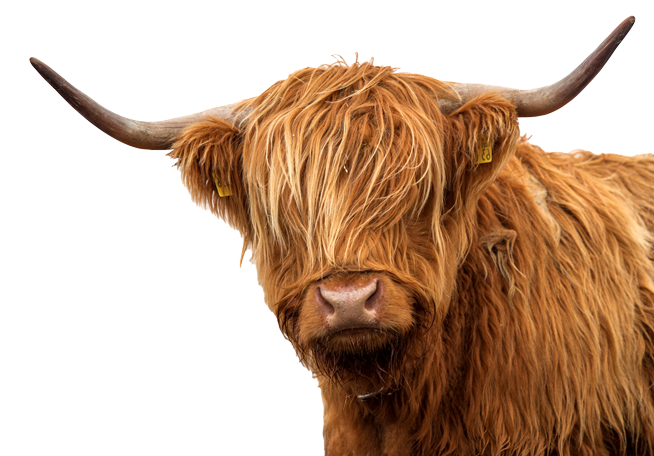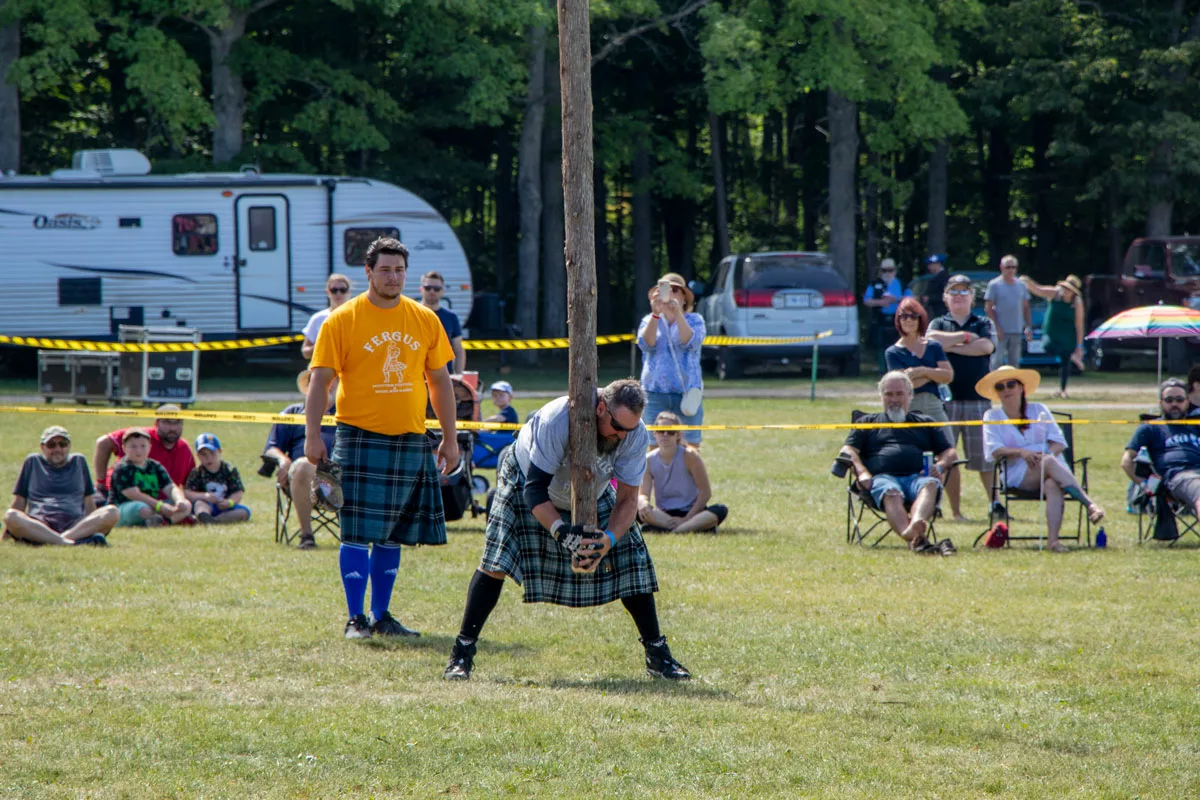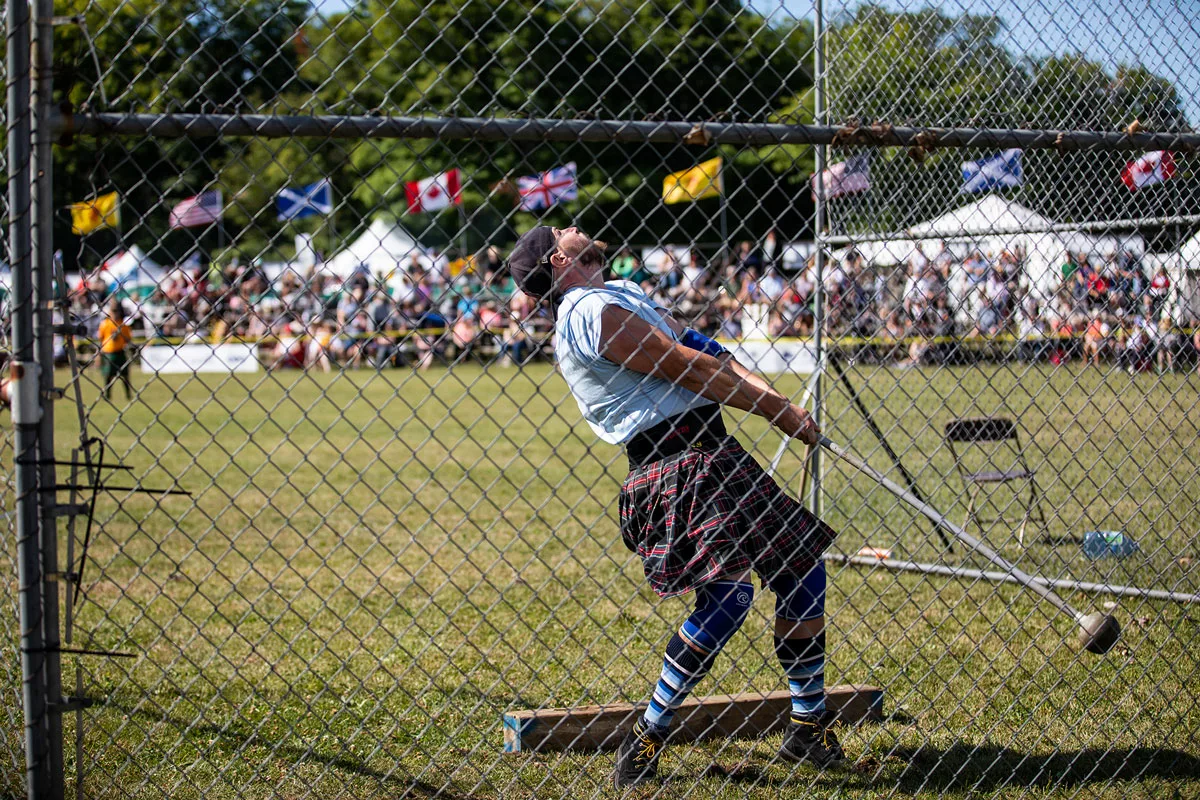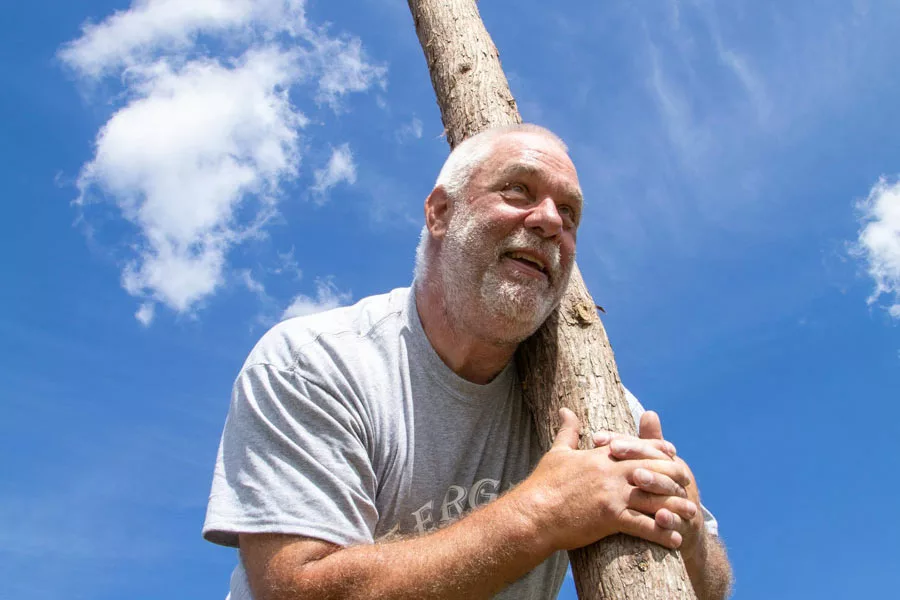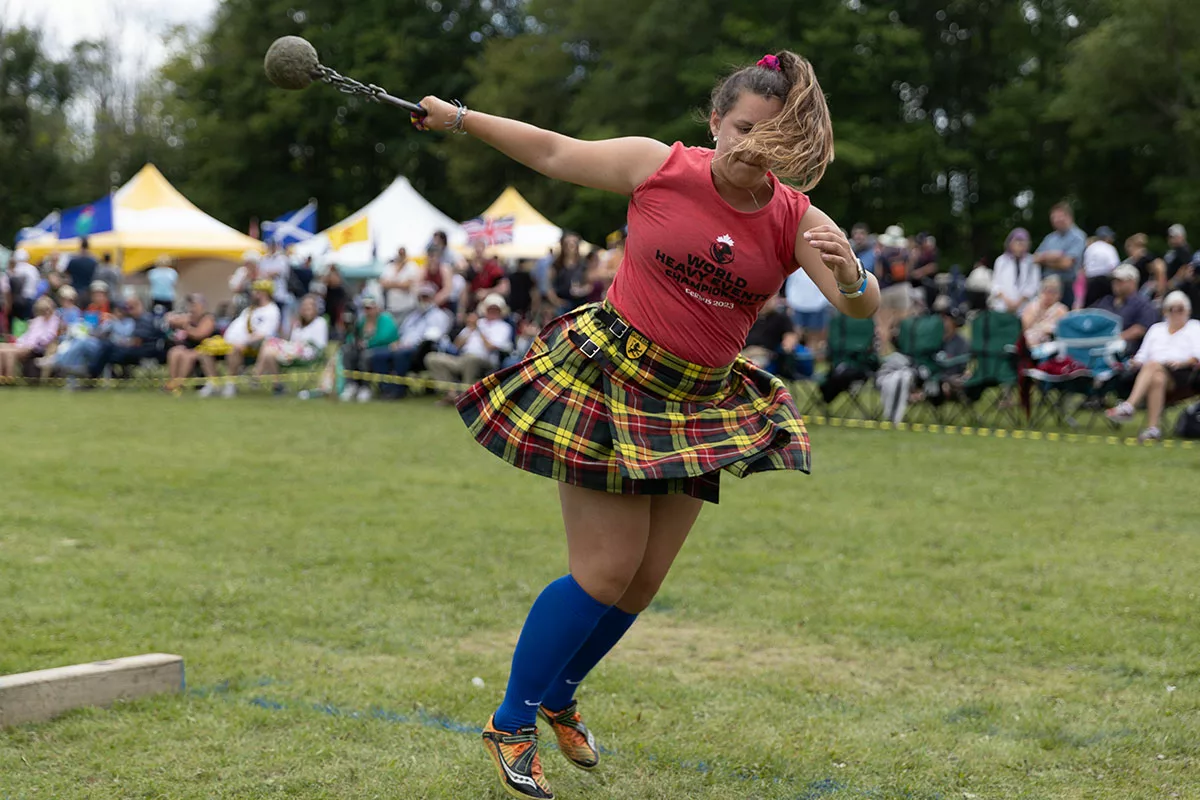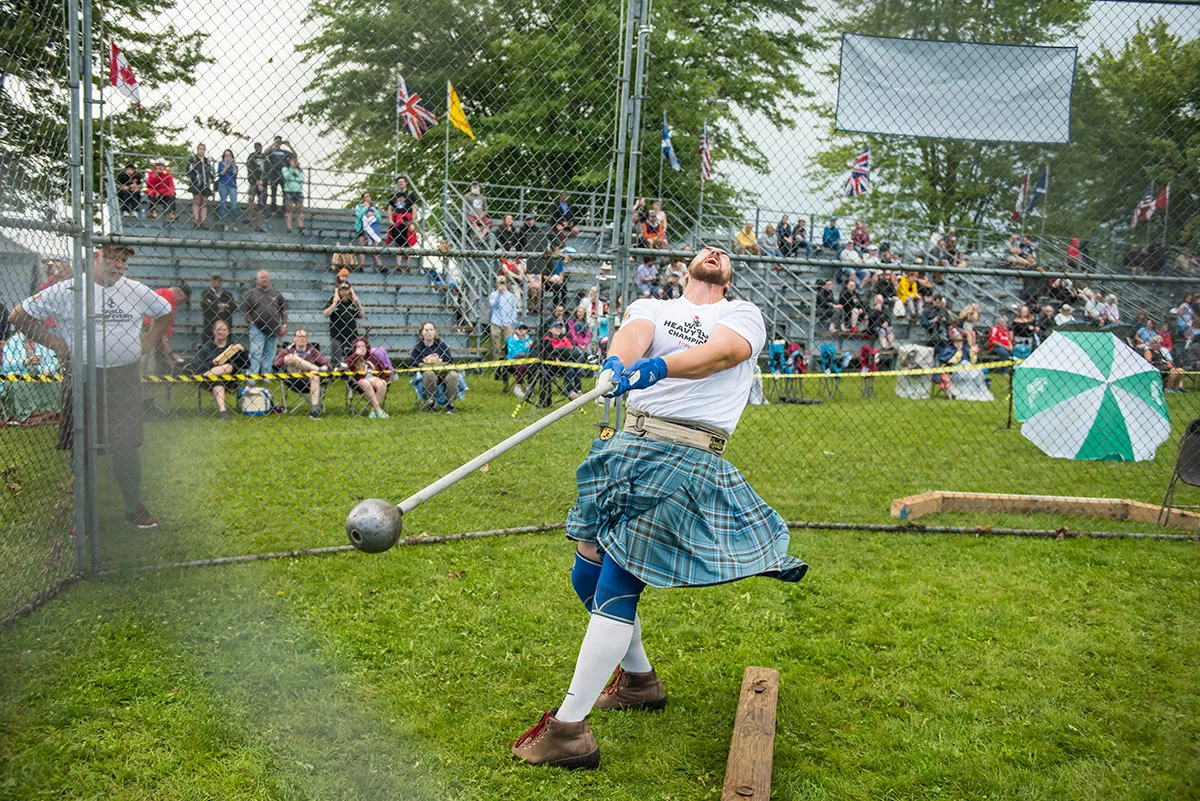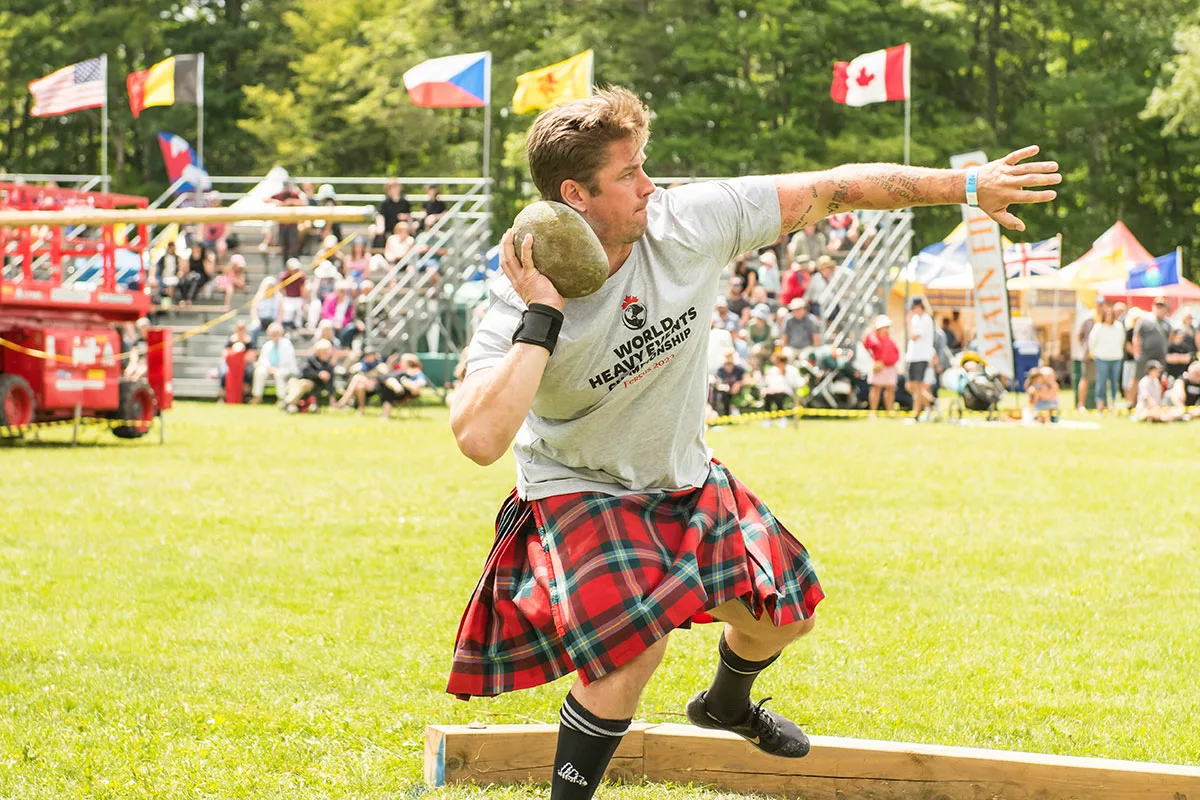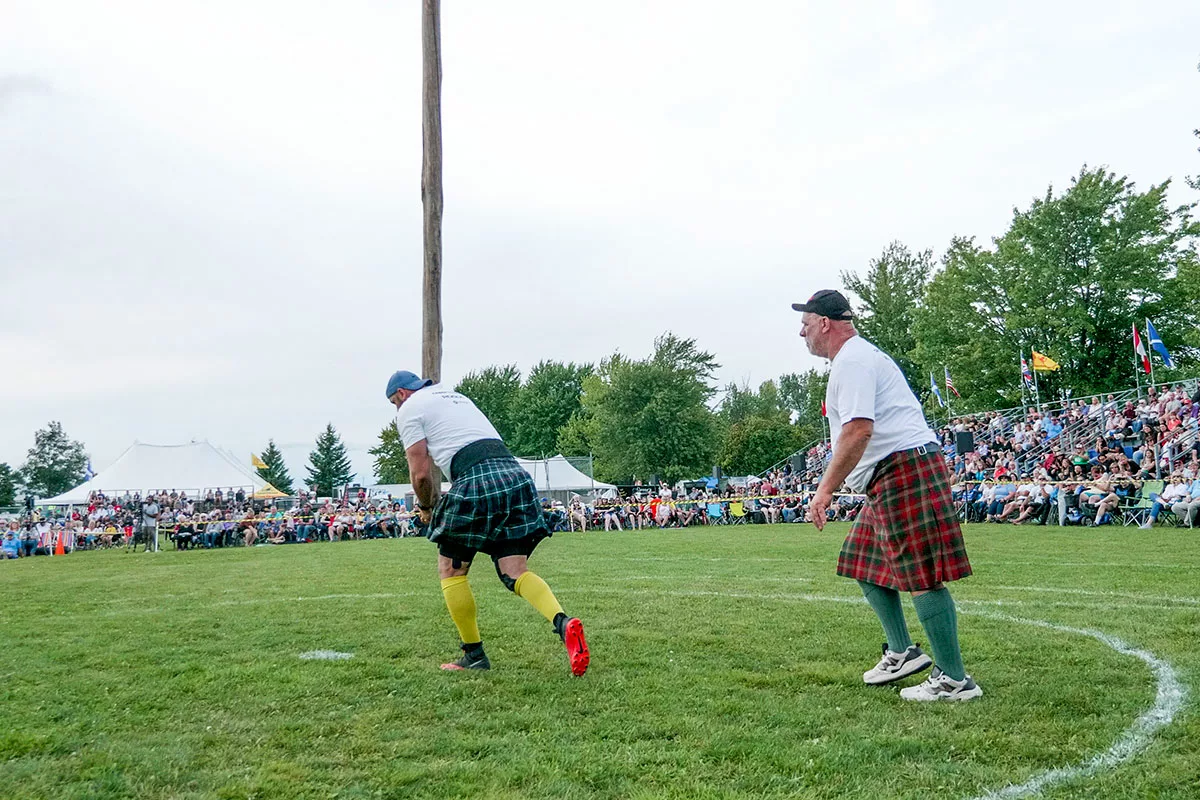
What are Heavy Events
Heavy events date back to the 11th century where they were used to lift the morale of the King’s troops before battle. The strongest men were chosen as the King’s personal bodyguards and the fastest became his couriers. Implements used were those found around the blacksmith’s shop and available to the early Scotsman. Woodsmen produced the caber (from ‘cabar’ – Scot’s Gaelic for rafter or beam); the blacksmith’s hammer became the hammer throw; scale weights used for measuring grain became the 56 lb. and 28 lb. weights for distance and height and a rounded riverbed stone made the ideal stone of strength. By the 16th century the games became festive occasions as can be seen in Fergus where crowds roar at the successful completion of these feats of strength.
See schedule for event details and click on "EVENT LOCATION" to filter by Heavy Events.
Heavy Event School
Interested in learning more about Heavy Events? Want to toss a caber or stone? Then this school is for you.
Events
One of the oldest and main Scottish Heavy Events, the stone is put with one hand with the stone remaining against the neck throughout the throw until the release. Any throwing style may be used as long as the rules followed and the style is deemed safe by the judge.
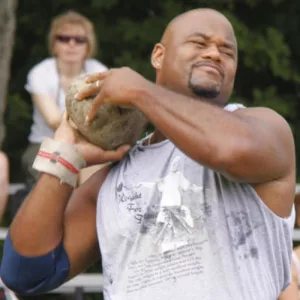
Often referred to as ‘The Widow Maker’ the 56lb weight for distance is the most technically and physically difficult of the three weight events. The implement is a 56lb mass suspended from a chain attached to a round or triangular handle that can be no longer than 18 inches. The force of this implement can rip the skin off the athlete’s hand. Standing in a 7’6” by 4’6” lined trig, the athlete must release the implement and maintain control in this confined space. The athletes typically use a two spin technique to generate speed and throw the weight as far as possible. Throws of 40 feet and farther are considered elite distances.
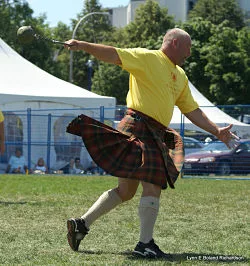
The 28lb weight for distance is identical in design to the 56lb weight for distance, but weighs only 28lbs. The trig area is identical and athletes’ techniques are often similar to the 56, however the speed of rotation and distances are awe inspiring! Considered to be the ‘more civilized’ of the weights for distance, world-class throws are over 80 feet.
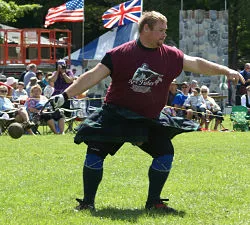
The Challenge Caber event will be open to those athletes that were successful in ‘turning’ the competition caber. The same rules and techniques apply to the challenge caber but it is not an official event included in the scoring for the Invitational open professional division. This crowd pleasing event is sometimes called the ‘money-caber’ as the athletes compete for a separate purse and honour of turning this big stick!
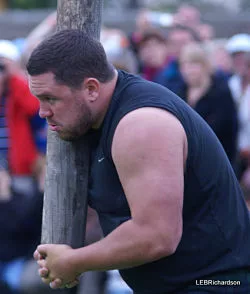
Out of all of the Scottish heavyweight events, the caber toss is one of the most popular to watch. The competitor must “pick” (pick up) the caber, run, and toss it so it lands straight out from him or her at a 12 o’clock position. The caber is tossed for accuracy, not distance. The judge must “call it” just as the caber hits the ground. A side judge will sometimes be used to determine if the caber rotated through 90 degrees – if not it’s a “Fifer” and not counted. The caber can be any size, and can range between 18′ to 26′, and weigh from approximately 100lbs to 150lbs. The size of the wood is important, as is the athletes style skill and strength. The competition caber is always the best wood continuing the world wide famous caber tradition at Fergus.

The Weight for Height is a 56lb mass attached to a round handle. Athletes heave the 56lb weight over a bar using a technique that does not allow foot movement. Favored by the more powerful athlete, only one hand is permitted for the throw. This crowd-pleasing event requires great endurance and encouragement from spectators. Each athlete gets three attempts to clear each height. They may choose to pass lower heights, but when they choose to enter the competition, they cannot pass again. World-class heights of 16 feet and higher will determine the eventual winner of this exciting event.
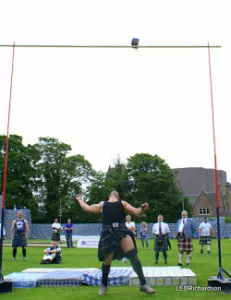
The Scottish hammers pre-date the Olympic Games with the modern sport evolving from Scottish agricultural practices. The hammer is a round mass weighing 16lb (light) or 22lb (heavy) attached to a 50″ PVC or rattan handle and thrown for distance. The competitors must rotate or “wind” the hammer to gain momentum before releasing it into the air for distances vs height. The throw is measured for distance to where the hammer head hits the ground. Most athletes wear special “hammer boots” – a heavy boot with a long spike or blade extending past the toes – the spike digs into the earth to help maintain footing during the throwing rotations. The athlete must stay behind the trig and cannot move their feet until the hammer is released. Heavy hammer throws over 100 feet are respectable on any field, light hammer throws over 130 feet are considered to be elite-level.
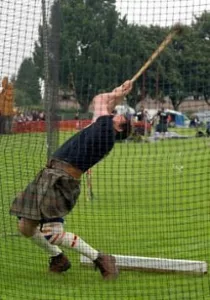
This event is much like the more familiar shot put, except a field stone is used. It is “put” from behind a “trig” – which is a marker log on the ground and the athlete may not cross the trig at any time or his/her throw is not counted. The stone is “put”-pushed from the shoulder in many different styles, though many athletes choose a back-facing glide-type movement or a spinning technique. The stone is marked where it hits the ground – the roll is just for the crowd. Throws over 50 feet are considered to be elite-level.
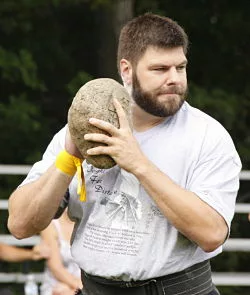
A pitchfork is used to hurl a burlap bag stuffed with straw over a horizontal bar above the competitor’s head. Typical weight for the bag is 16 pounds (about 7 kg). Three chances are given to each competitor to cleanly go over the bar, without touching it. After all challengers have made their attempts, the bar is raised and all successful competitors move on to the new height. This continues until all but one athlete is eliminated.
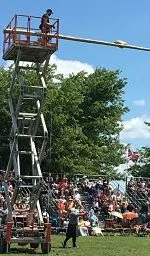
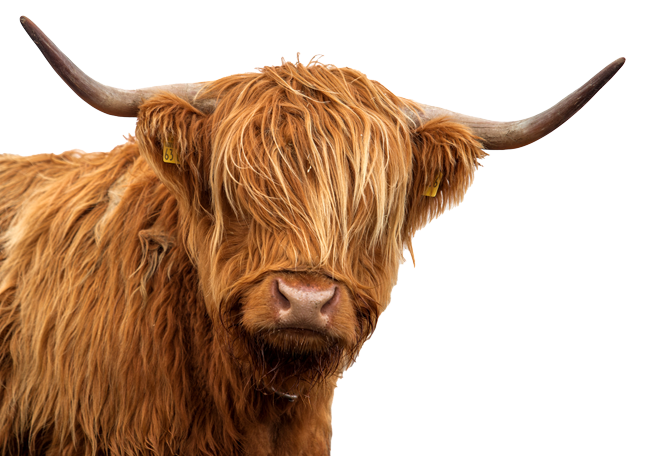
FAQ & General Info
General questions about Festival weekend?
Visit our General Information and FAQ’s page!
